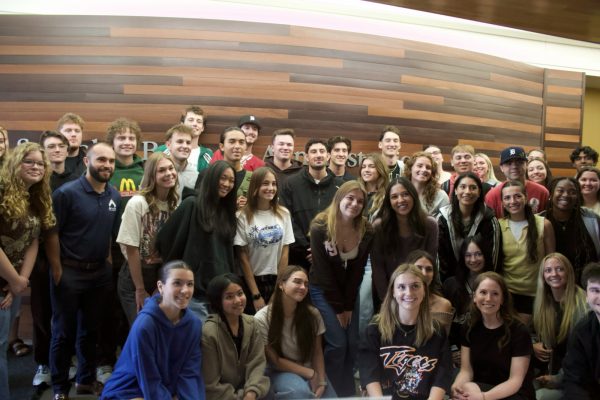OU bioethics experts weigh in on Chinese gene editing incident
A Chinese researcher claimed that he helped make the world’s first genetically altered babies through the usage of Clustered Regularly Interspaced Short Palindromic Repeats (CRISPR) technology in November 2018.
The researcher, He Jiankui of the city of Shenzhen, altered the embryos of seven couples, and the first of these edited children were just born — a set of twins. The birth of these children is thought to be the first example of genetically altered humans, and the scientific community is reeling from the discovery.
CRISPR is a relatively new technology, based on gene sequences found in some microscopic organisms. Bacteria and archaea use these gene sequences to find and remove invasive gene sequences left by viruses, and in these organisms the CRISPR sequence surgically cuts the dangerous DNA out of their own.
Researchers have been attempting to find ways to modify this microscopic scalpel for extremely effective gene therapy in humans, but this Chinese experiment was far earlier than expected and bypassed many ethical benchmarks.
“It is not being deployed heavily, or at least not in humans,” said Jason Wasserman, professor of foundational medical studies at Oakland University. “This is being undertaken in animal models before it’s eventually rolled out to human trials, and that’s what gets us into one of the key problems with what was done in China. That’s a standard best practice.”
Amy DeBaets, assistant professor of medical humanities and clinical bioethics at OU, explained the many ways that scientists normally begin trials, and how Jiankui failed to go through the necessary processes that normally protect patients and ensure ethical medical practices.
“Typically, new technologies, especially new genetic technologies, go through a long process of safety checks and animal testing…long before they’re introduced to humans,” DeBaets said. “And the research in this case bypassed all of that.”
Normally, even after new medical technologies go through animal testing, they still require a good deal of regulation. DeBaets explained that, even once new technologies get the all-clear after animal testing, they almost always go first to adult subjects. This way, they can give full consent to the testing being done to them. And if tests need to be done on children, even if the technology has passed previous ethical benchmarks, experimental technologies like CRISPR are only used when the child is in danger or extremely sick.
“The part that everyone agrees on ethically is that you don’t start in humans,” DeBaets concluded.
Even out of the context of Jiankui’s experiment, the idea of genetic engineering is still very fresh and unknown to most people. Wasserman sees this cautious, sometimes scared response as the common knee-jerk response to any new technology.
“There are reasons to be concerned, there are reasons that we need to be careful, reasons we need to act deliberately as we develop and deploy these technologies,” Wasserman explained. “We’ve seen a lot of science fiction movies, and we allow that to confound those sorts of judgements.”
But Wasserman said superhumans and science fiction are not what should be most concerning to our advancements in this field.
“Everyone thinks back to the movie ‘Gattaca,’ they start to worry about all these outcomes…what we really need to be concerned about is the ways that this will exacerbate inequality,” he said. “We already have dramatic health inequality in our society.”
As this technology continues to garner attention, Wasserman hopes less time will be spent worrying about the fantastical, science fiction outcomes, and there will be more focus on how this could drive an even deeper wedge in health inequality.





